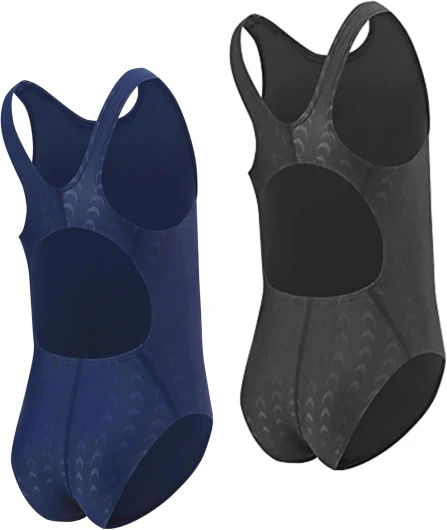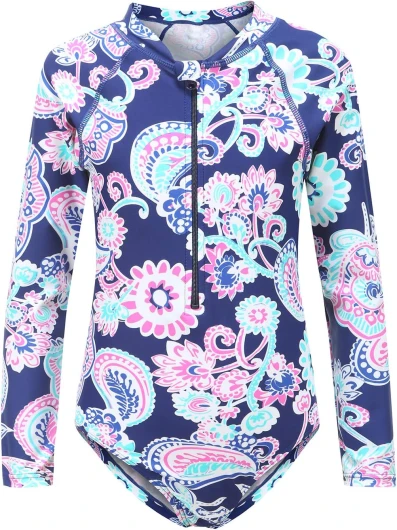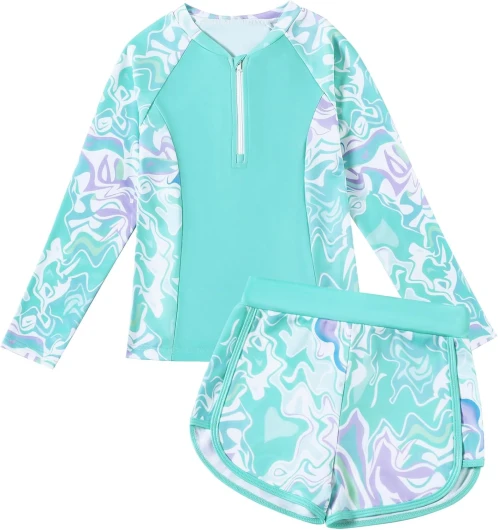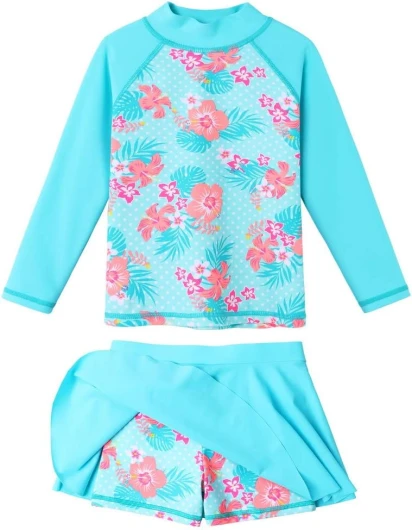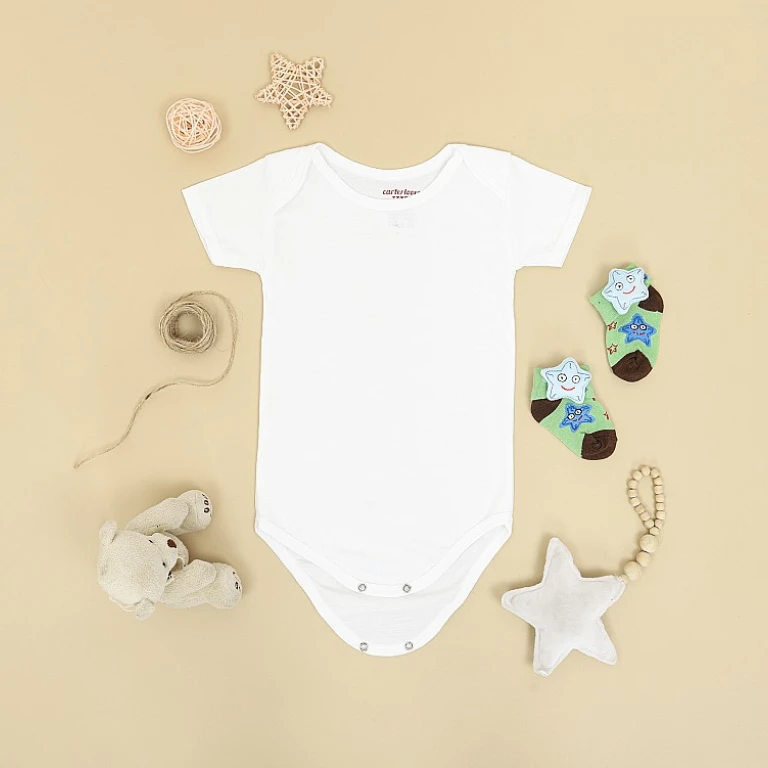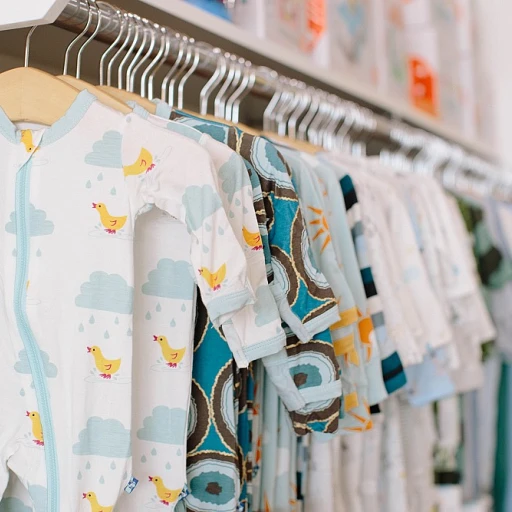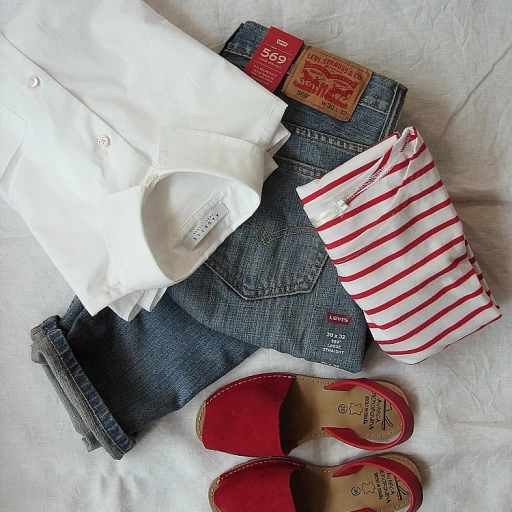
Understanding the Importance of Non-Toxic Swimwear
The Significance of Choosing Non-Toxic Swimwear
When it comes to caring for our kids, selecting the right swimwear is more than just about styles and colors. It's about ensuring their comfort and well-being, especially given their sensitive skin. Non-toxic swimwear options eliminate harmful chemicals that can irritate young skin, offering peace of mind and safety during water play.
The swimwear market is filled with vibrant bikinis, trendy bathing suits, and functional one-pieces, but the key lies in understanding the materials from which they are crafted. Garments made from sustainable materials, such as organic cotton and recycled nylon, reduce exposure to toxins. These fabrics not only align with safety standards but also embrace an eco-friendly lifestyle.
As you shop for kids' swimwear, it's crucial to look for certifications that ensure products are crafted without harmful substances. Labels like Oeko-Tex certification indicate the swimwear is free from harmful chemicals. This is particularly relevant for sensitive skins that might react to harsh dyes or synthetic compounds found in some mainstream swimwear.
Choosing swimwear that prioritizes safety also means opting for eco-friendly brands that are paving the way in sustainable fashion. These brands utilize innovative techniques, converting plastic bottles or discarded fishing nets into stylish, safe swimwear for children. Moreover, investing in high-quality pieces often comes with benefits such as durability, free shipping, and adherence to ethical manufacturing practices.
Understanding these elements help parents make informed choices, ensuring their children not only look good but also swim safely and sustainably.
Common Harmful Chemicals in Swimwear
Potential Toxins to Watch Out for in Swimwear
When shopping for kids’ swimwear, one crucial aspect to consider is the presence of harmful chemicals. These substances, often used in manufacturing, can be detrimental to sensitive skin and the environment. Here are some common culprits:
- PFCs (Perfluorinated Chemicals): Often used for their water-repellent properties in waterproof fabrics, PFCs are persistent in the environment and linked to health issues.
- Phthalates: Commonly found in plasticizing fabrics to increase flexibility, these chemicals can interfere with endocrine function.
- Formaldehyde: Used to prevent molding in textiles, formaldehyde can cause skin irritation and is a known carcinogen.
- NPEs (Nonylphenol Ethoxylates): These surfactants are used in textile processing and can break down into toxic compounds, affecting aquatic life.
Ensuring your child’s swimsuit is free from these chemicals is a critical step towards safe swimwear. It's advisable to look for garments certified by standards such as OEKO-TEX, which audit and certify fabrics to be free from harmful substances.
For further insights into maintaining a toxin-free wardrobe for your little ones, explore the fascinating journey of shark-themed socks for kids, which shares a similar concern for safe materials.
Materials to Look for in Safe Swimwear
Preferred Fabrics for Safety and Style
When selecting swimwear for your child, the choice of materials is crucial to ensure both safety and style. Non-toxic swimwear options often incorporate fabrics that are gentle on sensitive skin and meet eco friendly standards. Here's what to look for:- Organic Cotton: Known for its softness and reduced chemical use in cultivation, organic cotton is a sustainable choice, though it's rare in swimwear due to its lack of quick-drying properties.
- Recycled Nylon: Derived from fishing nets and plastic bottles, this fabric helps reduce waste while offering the stretch and resilience needed for active swimwear. Look for Oeko Tex certified options, ensuring they're free from harmful substances.
- Textiles Certified by Standards Like Oeko Tex: Such certifications guarantee that the fabric has been tested for chemicals and found to be safe, making it suitable for kids' swim pieces.
- Plant Based Fabrics: These are emerging as innovative solutions in eco friendly swimwear, designed to be sustainable while providing comfort and durability.
Brands Leading the Way in Non-Toxic Swimwear
Leading Brands in Non-Toxic Swimwear for Kids
When it comes to choosing safe swimwear for your little ones, several brands are paving the way with their commitment to non-toxic, eco-friendly options. These brands prioritize the health of your children and the planet, offering swimwear made from sustainable and organic materials.
- Eco-Friendly Innovators: Some swimwear brands are making waves by using recycled materials like fishing nets and plastic bottles. These pieces not only help reduce waste but also provide durable and stylish options for kids.
- Organic Cotton Champions: For sensitive skin, brands offering swimwear made from organic cotton are a great choice. These materials are gentle and free from harmful chemicals, ensuring a comfortable swim experience.
- Certified Safe: Look for brands that offer Oeko-Tex certified swimwear. This certification ensures that the fabric is free from harmful substances, providing peace of mind for parents.
- Recycled Nylon Leaders: Recycled nylon is another popular choice among sustainable swimwear brands. It offers the same durability as traditional nylon but with a significantly reduced environmental impact.
These brands often provide a range of styles, from bikini tops and bottoms to one-piece bathing suits, ensuring you can find the perfect fit for your child. Plus, many offer free shipping and a variety of price ranges to suit different budgets.
How to Choose the Right Swimwear for Your Child
Finding the Perfect Child-Friendly Swimwear
Choosing the right swimwear for your child involves more than just picking a cute bikini or swimsuit. It's imperative to ensure that the materials are both comfortable and safe for your little one's sensitive skin. Here's how you can make informed decisions when selecting swimwear:
- Consider Comfort: Look for swim pieces made of organic cotton or tex certified fabrics. Such materials are gentler on the skin, especially for long hours in and out of the water.
- Check Fabric Sustainability: Opt for swimwear crafted from recycled nylon or other recycled materials, like those derived from fishing nets or plastic bottles. These not only contribute to eco-friendly practices but also support sustainable fashion.
- Certifications Matter: Always check for certifications like Oeko-Tex Standard. This certification ensures that your child's swimwear is free of harmful substances.
- Pieces and Fit: Choose a swimwear brand that offers a range of options, from bikini tops and bottoms to one-piece bathing suits, ensuring a snug fit. Proper fit is crucial for freedom of movement while swimming and playing.
- Price Range and Affordability: While quality and safety are paramount, a balance with cost is essential. Many sustainable swimwear brands offer free shipping or discounts on bulk purchases, making it easier to shop within your budget.
By focusing on these aspects, you can ensure that your child's swimwear is not only stylish but also aligns with essential health and environmental standards.
Caring for Non-Toxic Swimwear
Keep Swimwear in Excellent Condition
Once you've selected the perfect sustainable swimwear made from non-toxic materials, it's important to extend its lifespan with proper care. Though organic swimwear might be more durable, knowing the correct care tips ensures your child's favorite bikini or swimsuit is always in top shape.
Rinse and Wash with Care
- Immediately rinse swimwear in cold water after use. This helps to remove chlorine, saltwater, and sunscreen residues, which protect the materials from damage.
- Use a mild detergent, preferably one that's eco friendly and free from harsh chemicals. This helps maintain the integrity of sensitive skin-friendly fabrics like organic cotton and recycled nylon.
- Hand wash instead of machine wash when possible, as this gentle method is better for preserving the elasticity and shape of organic and recycled materials.
Air Dry for Longevity
- Dry swimwear in the shade. Direct sunlight can fade colors and weaken fabrics such as tex certified recycled nylon; hence, air drying in a shaded area is recommended.
- Avoid using dryers. The heat can be detrimental to the integrity of the swimwear textiles.
Storage and Maintenance
- Store in a breathable fabric bag when not in use. Avoid plastic storage as it can trap moisture leading to mildew.
- Regularly check the seams and elastics for any signs of wear. Early intervention can prevent further damage to swim pieces.
By taking these steps, you can ensure your child's non-toxic swimwear, be it a bandeau bikini or a more conservative piece, retains its vibrant look and feel for many summers to come without succumbing to quick wear and tear.

